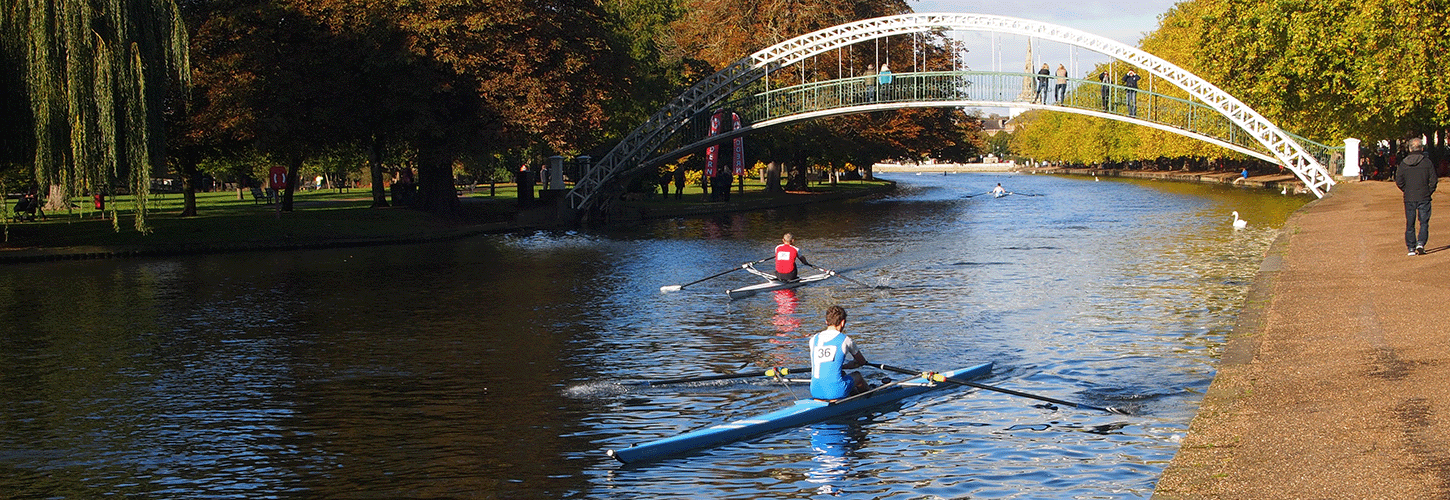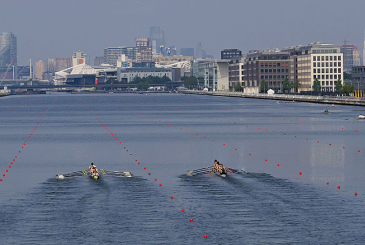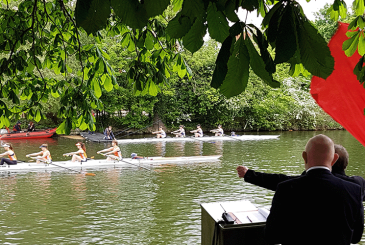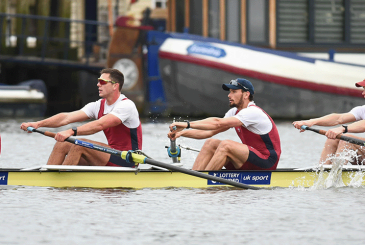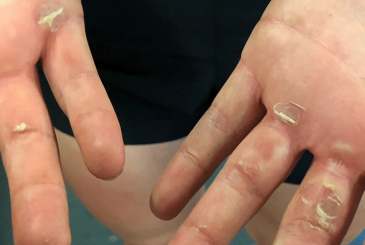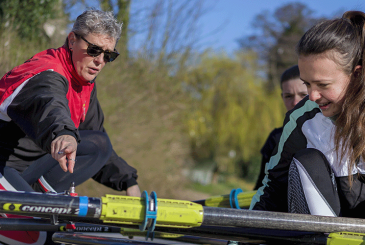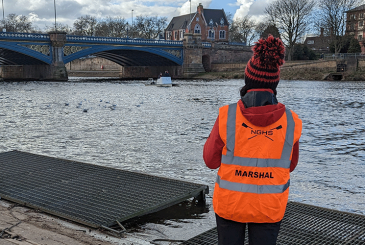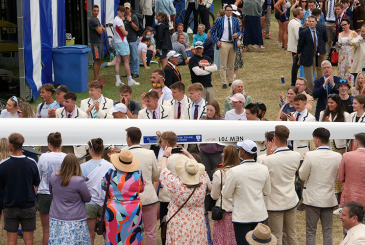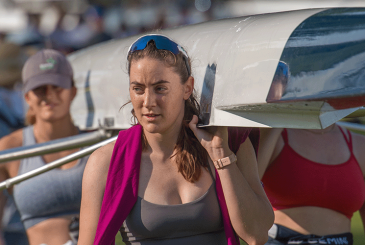Head races or ‘heads’ are the format used for most rowing races from September to March. But how do they work and what do you need to know before competing in your first head race? Experienced cox and head race organiser Helena Smalman-Smith explains all.
What is a head race in rowing?
Head races are time trials. Basically, every crew is timed over a fixed course and the fastest one wins.
Crews usually start at intervals of about 15 seconds. This means that there’s plenty of scope for overtaking during the race. The organisers will try to set off the fastest crews first (e.g. eights before double sculls, adults before younger juniors) to avoid too much ‘bunching up’, but crews will usually overtake within each broad category, and this is part of the fun of head racing (if you’re doing the overtaking, of course). In fact, many rowers find ‘racing in a vacuum’ (without being near other crews) to be quite boring.
Head races differ from regattas, which are knock-out competitions where crews start side by side and the first one over the finish line progresses to the next round.
Why are they called head races?
The name ‘head race’ is short for ‘head of the river race’. They are so called because the fastest crew traditionally earns the title ‘Head of the River’.
How long are head races?
Head races courses are usually between 2,000m and 5,000m long. Many head races are organised in divisions, so you can race more than once in different categories (see below).
When is the head race season?
Head races take place in the autumn, winter and early spring. When they’re held on rivers, the organisers arrange a ‘river closure’ while the head race is in progress. This wouldn’t be possible in the summer months when there’s other leisure boat traffic on the river.
Categories in head racing
Almost all head races offer multiple prizes for different categories – by boat type (fours or eights, for example), sex, age group and level. The start order will abbreviate these, so here’s a quick guide to what the abbreviations mean:
Boat type
Rowing boats have eight, four, two or one rowers. Digits are used for these in the abbreviation. If there’s an x after the digit (e.g. 4x) that means sculling (each rower has two blades, one in each hand). Otherwise (e.g. 2-), it will be a sweep boat (each rower has one oar, which they hold with both hands). If there’s a +(e.g. 4+ or 4x+) that means the boat is coxed. If there’s no +, or if there is a minus sign (-), the boat is coxless.
Some head races are for a single boat type, for example, the Women’s Eights Head of the River Race, or age group, like the National Schools Regatta, or for a single ‘discipline’ (sculling or sweep), such as Durham Long Distance Sculls, which is for coxed and coxless quadruple, double and single sculls (4x+, 4x-, 2x and 1x).
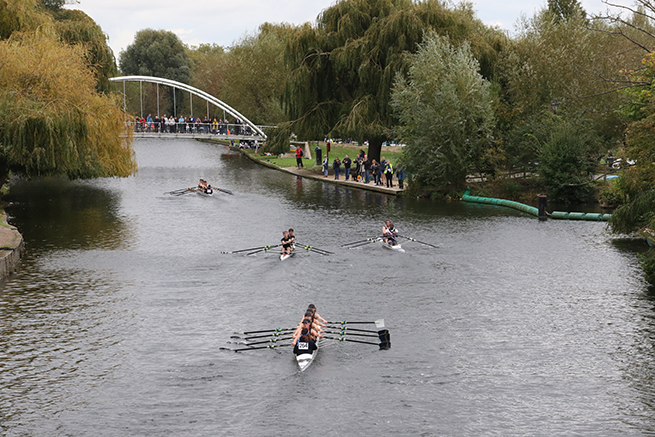
Sex
Crews can be Open (rowers of any sex or gender, but usually mostly men), Women or Mixed (at least half of the rowers must be women). The abbreviations will be O or Op, W and Mx.
Age
Young people are known as ‘juniors’ in rowing. There are different age categories within junior rowing, defined by their age on the previous 1 September. J18 means they were under 18 at that point.
‘Masters’ are older adults – in the year of their 27th birthday or older. Masters age categories apply to the average age of the rowers, and are designated with letters. A is the youngest. Masters categories regularly go up to G (average age 65+) or even beyond.
Level
At larger head races, and especially in the adult categories, crews will be split into Bands or Groups. These might be called Band 1/Band 2, or use other names such as Championship and Intermediate).
Example abbreviations
- WJ15 4+ – Women’s Junior under 15 coxed four
- Op.MasD 2x – Open Masters age category D (average age 50+) double sculls
- Op.4- Champ – Open Championships coxless fours.
What can you win at a head race?
Prizes at head races might be medals or ‘pots’ – pewter or glass tankards or glasses. Every member of the crew (including the cox) will get one. Major head races often give crew trophies too, mostly for the higher status events. These might be a ‘pennant’ or even the spoon of a blade that you can display permanently at your club. Some heads have silver trophies that you can have your photo taken with at the prize giving but usually can’t take away with you.
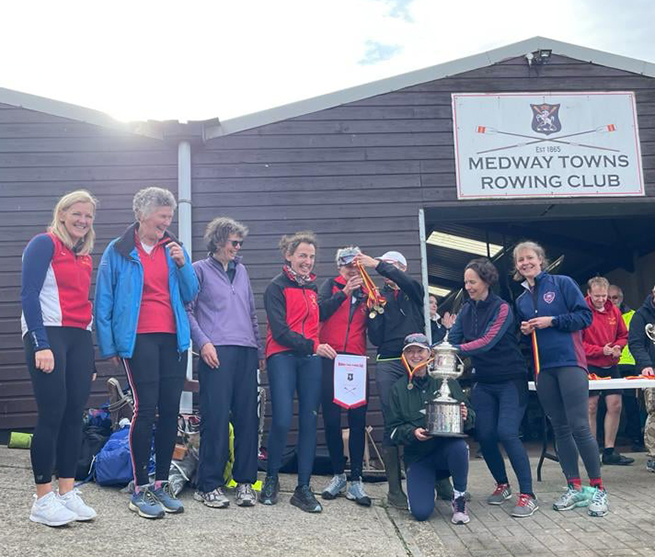
Where to watch a rowing head race
The best place to watch a head race is from a bridge over the course, if there is one. You’ll get the best view (especially if you want to take photos or film the racing) if you stand on the downstream side of the bridge – the side where you’ll see the crews going away from you, because then you can see their faces.
Advice for competing in a head race
The main thing to remember when you’re taking part in a head race is that it probably won’t be the ideal test of your speed. This is because you’ll usually have to hang around for a while at the start in the marshalling zone, possibly getting a bit chilly and losing your focus. But the same applies to your opposition too, so the challenge is to deliver the best performance you can in the circumstances.
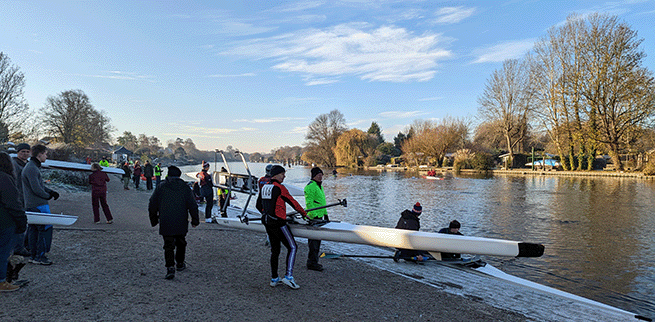
These articles provide more advice for how to ace head races:
- My first Head Race >>
- Head racing tips for crews and coxes >>
- Five common mistakes to avoid when racing Tideway Heads (which apply to all head races) >>
Check out the British Rowing Competition Calendar to find out when upcoming head races are near you. Entries for these usually close at least a week before the race, so you need to plan ahead if you want to take part!


